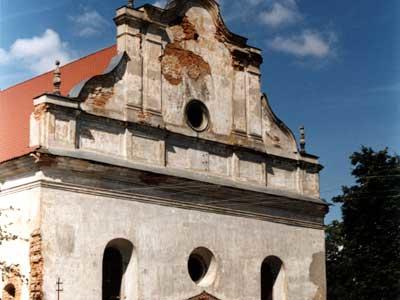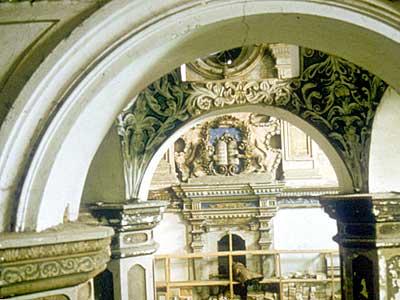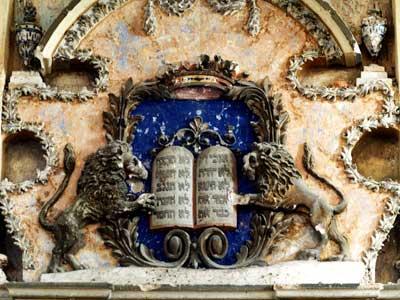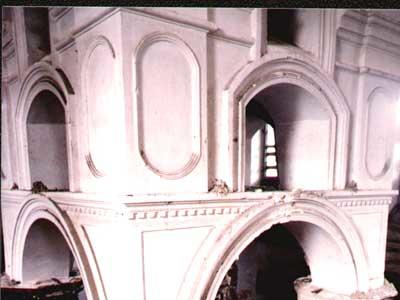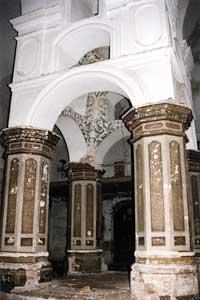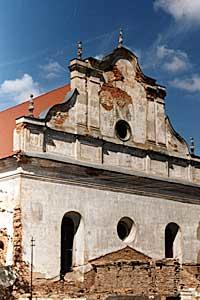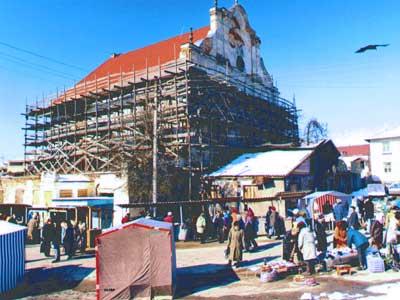Slonim Synagogue
Background
Slonim Synagogue, a baroque structure that has overlooked the Slonim city marketplace since 1642, remains the best preserved synagogue in Belarus, despite decades of neglect and vandalism. The building, with its dramatic gabled roof and imposing exterior, features an impressive group of paintings and carvings, including a collection of murals depicting musical instruments, scrollwork, and biblical scenes. Though built for the city’s once-sizeable Jewish community, in recent years Slonim has undergone substantial deterioration, largely as a result of the decimation of the local population during World War II and subsequent disuse of the synagogue. The building was used as a warehouse and was subject to vandalism, resulting in serious structural problems. When WMF began work at the site, the building’s roof had partially collapsed and its walls were structurally unstable.
How We Helped
WMF began conservation work at Slonim in 2000, compiling an analysis of the site and outlining necessary conservation measures to ensure the building’s tectonic stability and the preservation of its interior decorative scheme. A WMF report, presented in 2001, emphasized serious structural deficiencies in the synagogue walls, which threatened to collapse, and highlighted the poor condition of the building surroundings, which were littered with debris. Additionally, the building’s roof, partially collapsed and at serious risk of further deterioration, required immediate attention. WMF’s analysis provided a blueprint for future conservation work at the site. In accordance with its findings, WMF began work to stabilize key structural walls in the early 2000s.
Why It Matters
When it was built in the seventeenth century, Slonim was one of the region’s great synagogues, a monument to the thriving Jewish community in the area, and representative of rich, local cultural and aesthetic traditions. The synagogue is, to some, a grim reminder of a tragic history. Yet, Slonim remains one of the country’s great sacred structures. WMF’s work at the site marks an effort to reassert the building’s historical, architectural, and symbolic relevance. By providing a plan for future work at Slonim, and enacting key structural interventions there, WMF has demonstrated its commitment to the conservation of the synagogue, and its belief in the building’s importance as a Jewish heritage site.

